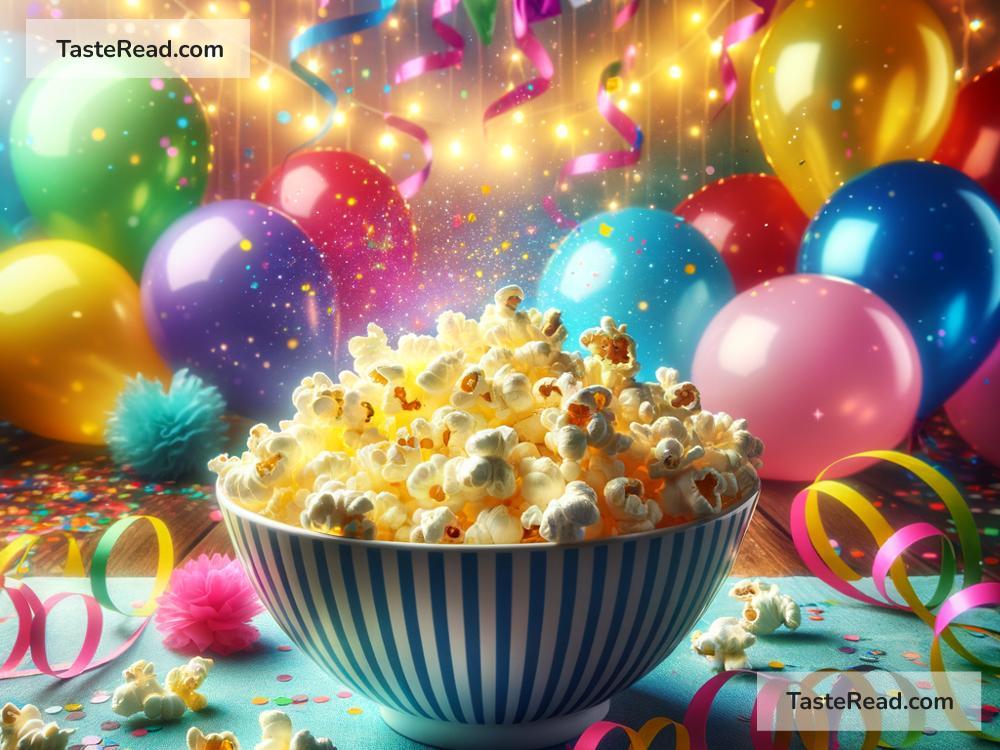How Popcorn Became a Symbol of Celebration
Popcorn is simple yet magical. It starts as small, hard kernels, but when heated, it transforms into fluffy, crunchy snacks that millions of people love. Today, popcorn is much more than just food—it’s a symbol of celebration. We see it at movie theaters, parties, fairs, and even during holiday festivities. But how did popcorn become such a big part of our celebrations? Let’s explore its fascinating journey.
The Origins of Popcorn
Popcorn has been around for thousands of years—long before movie theaters and microwave bags. Scientists believe that popcorn’s story began in ancient Mexico. Archaeologists have found popcorn remnants that date back over 5,000 years! Indigenous peoples in the Americas discovered that certain types of corn would pop when heated. They used popcorn for food, decorations, and even ceremonies.
For Native American tribes, popcorn was more than just a snack. It was a part of their culture and daily life. They would roast the kernels, toss them in hot sand, or cook them over fire until they popped. Early explorers, like Christopher Columbus, even noted how Indigenous peoples used popcorn as offerings during rituals and as ornaments for clothing.
Popcorn started spreading beyond the Americas when European settlers arrived. They learned to grow corn and adopted popcorn as one of their foods. Still, it wasn’t yet the party snack we know today.
Popcorn’s Big Moments in History
Popcorn’s popularity exploded in the 1800s, thanks to some key inventions. One of the most important was the popcorn machine, created by Charles Cretors in the late 1890s. His machine made it easy to pop large amounts of corn quickly, which helped vendors sell popcorn to crowds at fairs, carnivals, and events. At this point, popcorn started to become connected to celebrations.
By the early 1900s, popcorn was everywhere—from ballparks to street corners. It became a favorite treat because it was cheap, portable, and delicious. During special events like parades or outdoor festivals, popcorn vendors would pop fresh kernels and serve them to excited customers.
Popcorn and the Movies
Today, it’s hard to imagine going to a movie theater without grabbing a tub of popcorn. But surprisingly, popcorn wasn’t always welcome in theaters. In the early 1900s, theaters catered to wealthier audiences and wanted to remain elegant venues. Popcorn was seen as too messy and cheap for these fancy places.
Everything changed during the Great Depression in the 1930s. Movie tickets became a low-cost form of entertainment for families struggling financially. Vendors saw an opportunity and started selling popcorn to moviegoers outside theaters. Eventually, theaters gave in and started selling popcorn inside. It was a win-win situation: customers loved having snacks to enjoy during movies, and theaters made extra money.
Popcorn at the movies became a tradition that continues today. The smell of freshly popped kernels and the crunch of every bite now feels like an essential part of the movie experience. Watching a movie—whether it’s at the cinema or at home—feels even more special when you have a bowl of popcorn.
Popcorn and Holidays
Popcorn also found a place in holiday celebrations. In the 1800s and early 1900s, people started using popcorn to make decorations, especially around Christmas. Families would string popcorn together to create garlands for their Christmas trees. Popcorn’s light, airy texture made it easy to thread onto a needle and sturdy enough to last for weeks.
This tradition wasn’t just about making the tree look pretty. It was a fun activity that brought families together. Kids and parents would sit around the table, popping kernels and stringing them while chatting and laughing. Even today, some families keep this tradition alive, blending popcorn with cranberries or colorful beads for festive decorations.
Popcorn also became a big part of other holidays and celebrations. At birthday parties, fairs, and carnivals, popcorn machines often take center stage. Popcorn’s versatility allows it to be customized—whether it’s caramel-coated, cheese-flavored, rainbow-colored, or turned into popcorn balls.
Why Popcorn Represents Celebration
Popcorn is more than just a snack—it represents joy, togetherness, and fun. Part of its charm is how it pops. Watching kernels burst into fluffy pieces feels almost magical, making popcorn feel special from the very beginning.
Popcorn is also easy to share. A big bowl or bag of popcorn encourages people to gather around, whether at a movies, a party, or a park. Sharing popcorn creates memories and adds to the festive spirit.
Finally, popcorn has a nostalgic quality. Many of us associate it with happy times—watching movies, attending fairs, or spending holidays with loved ones. Its simple, comforting taste reminds us of carefree moments and joyful experiences.
The Future of Popcorn
Popcorn is here to stay as a celebration snack. People continue to invent new ways to prepare and enjoy it. From gourmet popcorn shops offering exotic flavors to creative home recipes, popcorn keeps evolving while staying true to its roots.
No matter how popcorn is served—sweet, salty, or spicy—it will always symbolize happy, festive occasions. So, next time you see or smell popcorn popping, take a moment to enjoy its cheerful presence. Whether you’re at a movie theater, a party, or celebrating a holiday, popcorn is there to remind us to savor life’s little joys—and to celebrate every pop along the way!


